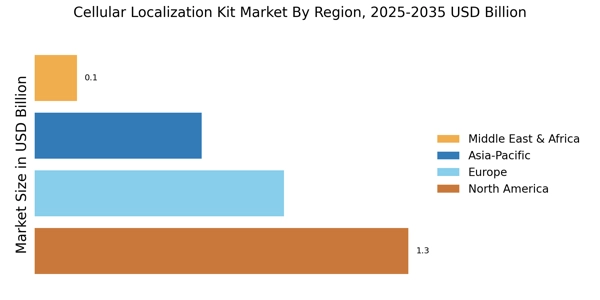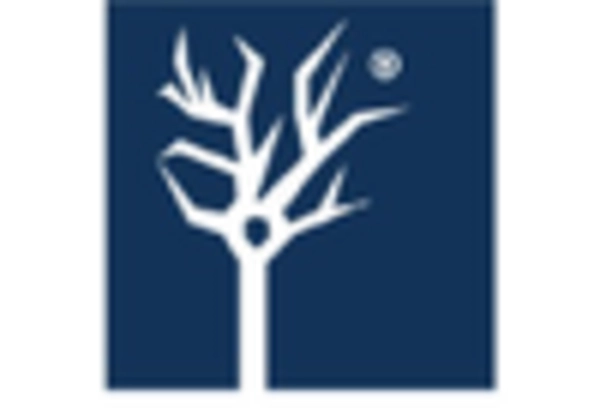Growing Focus on Drug Discovery
The Cellular Localization Kit Market is benefiting from an intensified focus on drug discovery processes. Pharmaceutical and biotechnology companies are increasingly investing in research and development to identify new therapeutic targets and optimize drug candidates. Localization kits play a crucial role in this context, as they enable researchers to determine the subcellular distribution of potential drug compounds. This information is vital for understanding drug efficacy and safety profiles. The market for drug discovery is projected to expand significantly, driven by the need for innovative therapies. Consequently, the Cellular Localization Kit Market is likely to experience growth as more organizations incorporate localization kits into their drug development workflows.
Advancements in Imaging Technologies
Recent advancements in imaging technologies are significantly influencing the Cellular Localization Kit Market. Innovations such as super-resolution microscopy and advanced fluorescence techniques have enhanced the ability to visualize cellular components with unprecedented clarity. These technological improvements facilitate more accurate localization of proteins and other biomolecules within cells, thereby driving research in various fields, including cell biology and drug development. The integration of these advanced imaging modalities into localization kits is likely to attract researchers seeking to leverage cutting-edge tools for their studies. As a result, the Cellular Localization Kit Market is expected to witness a surge in demand, as researchers increasingly adopt these sophisticated technologies to enhance their experimental outcomes.
Rising Demand for Targeted Therapies
The Cellular Localization Kit Market is experiencing a notable increase in demand for targeted therapies, particularly in oncology and personalized medicine. As healthcare providers seek to enhance treatment efficacy, the need for precise cellular localization of therapeutic agents becomes paramount. This trend is underscored by the growing prevalence of cancer and other chronic diseases, which necessitate innovative treatment approaches. According to recent estimates, the market for targeted therapies is projected to reach substantial figures, indicating a robust growth trajectory. Consequently, the Cellular Localization Kit Market is poised to benefit from this shift towards more personalized and effective treatment modalities, as researchers and clinicians increasingly rely on localization kits to optimize therapeutic outcomes.
Increased Academic Research Initiatives
The Cellular Localization Kit Market is witnessing a surge in academic research initiatives, particularly in the fields of molecular biology and biochemistry. Universities and research institutions are allocating more resources towards understanding cellular mechanisms and interactions, which necessitates the use of localization kits. This trend is reflected in the increasing number of publications and research projects focusing on cellular localization studies. As academic institutions strive to advance scientific knowledge, the demand for high-quality localization kits is expected to rise. This growing emphasis on fundamental research is likely to bolster the Cellular Localization Kit Market, as researchers seek reliable tools to support their investigations.
Emerging Applications in Regenerative Medicine
The Cellular Localization Kit Market is poised for growth due to emerging applications in regenerative medicine. As the field evolves, there is a heightened interest in understanding cellular behavior and localization during tissue regeneration and repair processes. Localization kits are essential for studying stem cell differentiation and tissue engineering, providing insights into how cells interact within their microenvironments. The regenerative medicine market is anticipated to expand, driven by advancements in cell therapies and tissue engineering techniques. Consequently, the Cellular Localization Kit Market is likely to benefit from this trend, as researchers and clinicians increasingly utilize localization kits to explore new therapeutic avenues in regenerative medicine.


















Leave a Comment